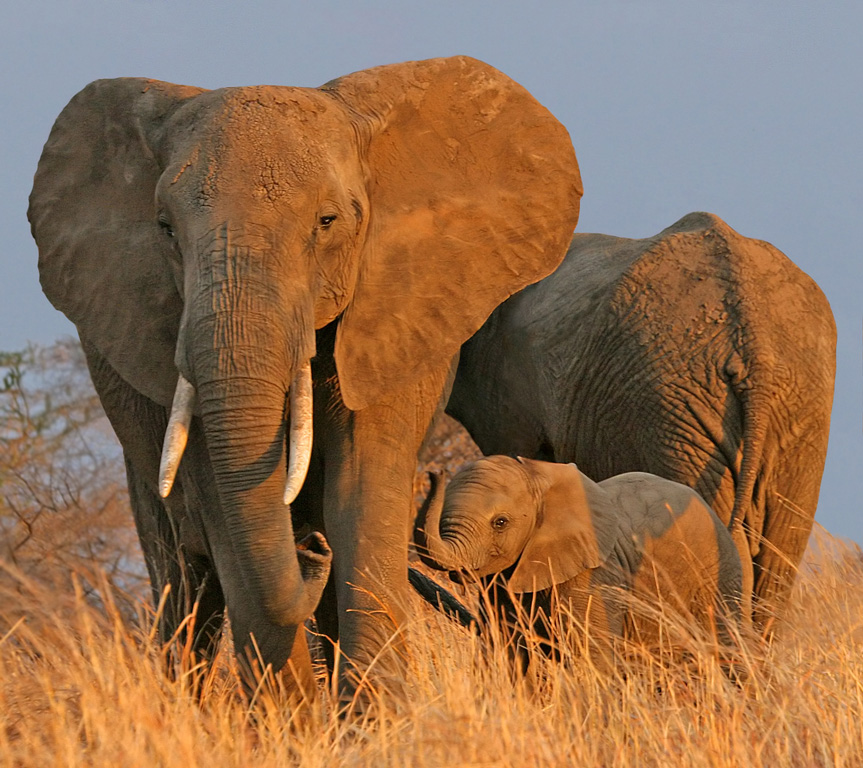The Elephant is endangered in the zoo. It seems to me that people don´t know that the elephants in the zoo are being fat and soon can´t breeth so they die and are becoming endangered. See more on EAN if you want to know about the elephants in the zoo. INFORMATION The elephant is the largest and heaviest mammal on land and is very intelligent as well as strong. Elephants have the largest teeth, tusks, and ears. They have small eyes which are protected by very long eyelashes. Elephant skin is thick, grey and very wrinkled. Having deep wrinkles helps elephants stay cool because water gets trapped inside the wrinkles and evaporates slowly, thus cooling the elephant. Their hearing is keen and they can detect rumblings from miles away. Every elephant's ears are different, just like human fingerprints. Elephants live together in family groups with a matriarch (wise, experienced female) as the head. Daughters and sisters stay together, and young males up to age 13 are included. However, males are encouraged to leave and can be found in small bachelor groupings or on their own. The mother elephants look after their young longer than any other animal except humans. All members of the family assist and protect the youngsters. Babies will follow their mothers, sisters, or aunties, and are guided by trunk touches. Babies drink milk from their mothers up to 4 years. The elephant's trunk is really it's nose, but the elephant can use it like an extra hand. The trunk is used for breathing, eating, drinking, touching, picking up things, throwing things, feeling, digging, squirting, fighting, playing and greeting. Smell is the most important sense for the elephant, and the trunk can often be seen held up high trying to determine smells in the air. TYPES Asian Hindues revere Asian elephants as God Ganesha but have also been responsible for harnessing its strength and intelligence for everything from logging to warfare. They differ from the African elephants since they are smaller and have two dome like structures on their head, small ears and a rounded back. They also have a single finger like projection on the trunk whereas the African elephants have two. They can be seen in Corbett National Park ( Uttaranchal), Kaziranga (Assam) in India. Other places would be Baradia National park (Nepal), Minneriya National Park ( Sri Lanka) and in Malaysia and Indonesia. African It is the biggest living land animal. It can walk as fast as 30 km. per hour enough to overtake a human athlete. It can be seen in Amboseli, Tsavo National park ( Kenya) , Tarangire, Ruaha, Serengiti National parks ( Tanzania) . You can find them in Zambia, Botswana, Zimbabwe, Nambia and South Africa. Ivory trade caused the massive decline in Africa, but the ban in 1990 has helped save many elephants. Poaching though still continues. The Ecological Impact of the Elephant is Priceless!
THREATS: 1. Habitat loss : Forests are being logged and converted to agriculture and isolated populations of elephants are being cut off from their historical migratory routes causing elephant human conflicts. 2. Ivory trade : Poaching for ivory and occassionally meat also is a threat. Since only males have tusks, some wild populations end up having only females causing an imbalance in breeding. HOW CAN I HELP ? Donate and Shop on our website or sponsor in your local zoo or support other communities such as: http://www.edgeofexistence.org/ |  |
